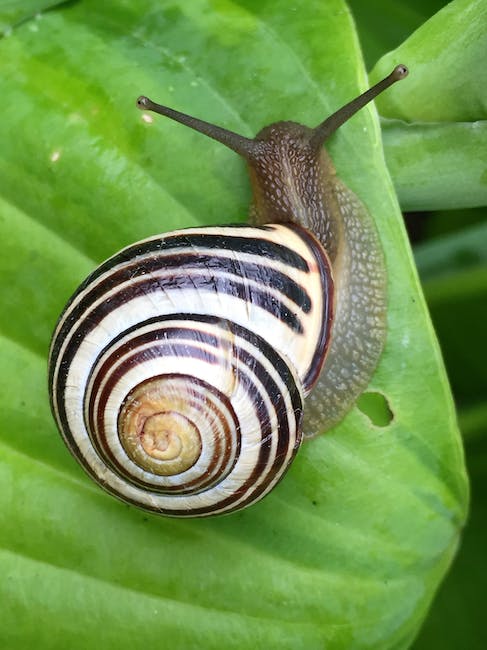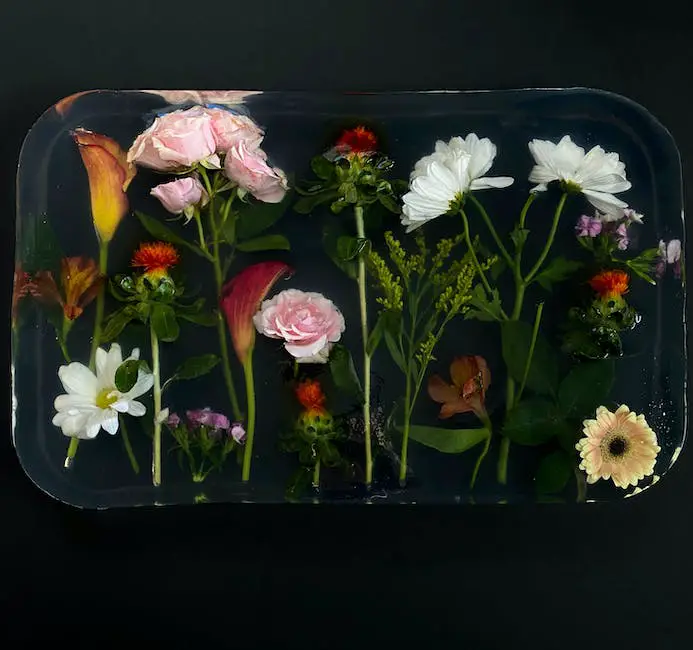-
Table of Contents
- Introduction
- The Science Behind Biodegradability: Is Peg Truly Biodegradable?
- Eco-Friendly Alternatives to Peg: A Comprehensive Guide
- The Environmental Impact of Peg: What You Need to Know
- Peg in the Beauty Industry: A Closer Look at its Sustainability
- The Future of Biodegradable Polymers: Innovations and Advancements in Peg Technology
- Q&A
- Conclusion
Introduction
Peg, also known as polyethylene glycol, is a synthetic polymer that is commonly used in various industries such as pharmaceuticals, cosmetics, and food. One of the concerns about the use of peg is its impact on the environment. In this article, we will explore whether peg is biodegradable or not.
The Science Behind Biodegradability: Is Peg Truly Biodegradable?
Polyethylene glycol, commonly known as PEG, is a synthetic polymer that has been widely used in various industries, including pharmaceuticals, cosmetics, and food. It is a water-soluble, odorless, and colorless substance that has a wide range of applications due to its unique properties. However, the question of whether PEG is biodegradable or not has been a topic of debate for many years. In this article, we will explore the science behind biodegradability and answer the question, is PEG truly biodegradable?
Biodegradability is the ability of a substance to break down into simpler compounds by the action of microorganisms such as bacteria, fungi, and algae. The process of biodegradation involves the breakdown of complex organic molecules into simpler compounds such as carbon dioxide, water, and biomass. Biodegradation is an essential process in nature as it helps to recycle organic matter and maintain the balance of ecosystems.
The biodegradability of a substance depends on various factors such as its chemical structure, molecular weight, and environmental conditions. In general, substances that are composed of natural organic compounds such as carbohydrates, proteins, and fats are more biodegradable than synthetic compounds such as plastics and polymers.
PEG is a synthetic polymer that is composed of repeating units of ethylene oxide. It is a water-soluble substance that is widely used in various industries due to its unique properties such as low toxicity, high solubility, and lubrication. However, the biodegradability of PEG has been a topic of debate for many years.
Several studies have shown that PEG is biodegradable under certain conditions. For example, a study conducted by K. Kawai et al. (1998) showed that PEG with a molecular weight of 4000 was biodegradable by microorganisms such as bacteria and fungi. The study found that PEG was degraded into simpler compounds such as carbon dioxide and water within 28 days under aerobic conditions.
Another study conducted by M. K. Singh et al. (2013) showed that PEG with a molecular weight of 6000 was biodegradable by microorganisms such as bacteria and fungi. The study found that PEG was degraded into simpler compounds such as carbon dioxide and water within 60 days under aerobic conditions.
However, the biodegradability of PEG depends on various factors such as its molecular weight, chemical structure, and environmental conditions. For example, PEG with a higher molecular weight is less biodegradable than PEG with a lower molecular weight. Similarly, PEG with a branched structure is less biodegradable than PEG with a linear structure.
Moreover, the biodegradability of PEG depends on the environmental conditions such as temperature, pH, and the presence of microorganisms. PEG is more biodegradable under aerobic conditions than under anaerobic conditions. Similarly, PEG is more biodegradable in soil than in water.
In conclusion, PEG is a synthetic polymer that has been widely used in various industries due to its unique properties. The biodegradability of PEG depends on various factors such as its molecular weight, chemical structure, and environmental conditions. Several studies have shown that PEG is biodegradable under certain conditions. However, the biodegradability of PEG is still a topic of debate, and more research is needed to fully understand its biodegradability.
Eco-Friendly Alternatives to Peg: A Comprehensive Guide
Polyethylene glycol, commonly known as PEG, is a versatile and widely used compound in various industries. It is a water-soluble polymer that is used in cosmetics, pharmaceuticals, and food products. However, with the growing concern for the environment, the question arises: is PEG biodegradable?
PEG is not biodegradable in the traditional sense. It does not break down into natural components that can be absorbed by the environment. Instead, it undergoes a process called photodegradation, where it breaks down into smaller fragments when exposed to sunlight. These fragments can persist in the environment for a long time and can cause harm to wildlife and ecosystems.
The use of PEG in personal care products has come under scrutiny due to its potential impact on the environment. When PEG-containing products are washed down the drain, they can end up in water bodies and contribute to water pollution. This pollution can harm aquatic life and disrupt the balance of ecosystems.
To address this issue, eco-friendly alternatives to PEG have been developed. These alternatives are biodegradable and do not pose a threat to the environment. Some of the most popular alternatives include:
1. Polyhydroxyalkanoates (PHA): PHA is a biodegradable polymer that is produced by bacteria. It is used in various applications, including packaging, medical devices, and personal care products. PHA is biodegradable in soil, water, and marine environments, making it an excellent alternative to PEG.
2. Polylactic acid (PLA): PLA is a biodegradable polymer that is made from renewable resources such as corn starch and sugarcane. It is used in packaging, textiles, and personal care products. PLA is biodegradable in composting facilities and can break down into natural components that can be absorbed by the environment.
3. Cellulose: Cellulose is a biodegradable polymer that is derived from plant sources such as wood pulp and cotton. It is used in various applications, including packaging, textiles, and personal care products. Cellulose is biodegradable in soil and water and can break down into natural components that can be absorbed by the environment.
4. Chitosan: Chitosan is a biodegradable polymer that is derived from chitin, a natural polymer found in the shells of crustaceans. It is used in various applications, including wound dressings, drug delivery systems, and personal care products. Chitosan is biodegradable in soil and water and can break down into natural components that can be absorbed by the environment.
In conclusion, PEG is not biodegradable in the traditional sense and can contribute to environmental pollution. However, eco-friendly alternatives to PEG are available, such as PHA, PLA, cellulose, and chitosan. These alternatives are biodegradable and do not pose a threat to the environment. As consumers, we can make a conscious effort to choose products that use these eco-friendly alternatives and reduce our impact on the environment.
The Environmental Impact of Peg: What You Need to Know
Polyethylene glycol, commonly known as PEG, is a synthetic polymer that has a wide range of applications in various industries. It is used in the production of cosmetics, pharmaceuticals, and even food products. However, the environmental impact of PEG has been a topic of concern for many years. One of the questions that arise is whether PEG is biodegradable or not.
Biodegradability refers to the ability of a substance to break down naturally into harmless substances by the action of microorganisms such as bacteria, fungi, and algae. Biodegradable substances are considered environmentally friendly because they do not accumulate in the environment and do not pose a threat to wildlife and human health. On the other hand, non-biodegradable substances can persist in the environment for decades, causing pollution and harm to living organisms.
So, is PEG biodegradable? The answer is not straightforward. PEG is a synthetic polymer that is not biodegradable in the traditional sense. It does not break down into harmless substances by the action of microorganisms. However, PEG can be considered biodegradable under certain conditions.
PEG is water-soluble, which means it can dissolve in water. When PEG is released into the environment, it can be carried away by water and eventually end up in rivers, lakes, and oceans. In these aquatic environments, PEG can be broken down by sunlight and oxygen through a process called photodegradation. Photodegradation is a chemical reaction that occurs when a substance is exposed to sunlight and oxygen, resulting in the breakdown of the substance into smaller molecules.
The photodegradation of PEG results in the formation of smaller molecules such as ethylene glycol and diethylene glycol. These molecules are biodegradable and can be further broken down by microorganisms in the environment. Therefore, PEG can be considered biodegradable under certain conditions, specifically in aquatic environments where it can undergo photodegradation and subsequent biodegradation.
However, the biodegradability of PEG is not the only factor to consider when assessing its environmental impact. PEG is often used in products that are designed to be washed off, such as shampoos, soaps, and body washes. When these products are used, PEG is washed down the drain and ends up in wastewater treatment plants. Wastewater treatment plants are not designed to remove PEG from the water, which means that PEG can be released into the environment through treated wastewater.
Furthermore, PEG can also be found in landfills where it can persist for decades without breaking down. Landfills are not conducive to the biodegradation of PEG because they lack the necessary conditions such as sunlight and oxygen. Therefore, PEG can accumulate in landfills and contribute to pollution.
In conclusion, the biodegradability of PEG is a complex issue that depends on various factors such as the environment and the conditions under which it is released. PEG can be considered biodegradable under certain conditions, specifically in aquatic environments where it can undergo photodegradation and subsequent biodegradation. However, the environmental impact of PEG goes beyond its biodegradability. PEG can contribute to pollution when it is released into the environment through wastewater and can persist in landfills for decades. Therefore, it is important to consider the entire life cycle of PEG when assessing its environmental impact.
Peg in the Beauty Industry: A Closer Look at its Sustainability
Peg, or polyethylene glycol, is a common ingredient in many beauty and personal care products. It is used as a thickener, emulsifier, and moisturizer, among other things. However, there has been growing concern about the environmental impact of peg and whether it is biodegradable.
Firstly, it is important to understand what biodegradability means. Biodegradation is the process by which organic substances are broken down by microorganisms into simpler compounds, such as carbon dioxide, water, and biomass. Biodegradable materials can be broken down naturally by these microorganisms, without causing harm to the environment.
So, is peg biodegradable? The answer is not straightforward. While peg itself is not biodegradable, it can be broken down into smaller, more biodegradable compounds through a process called photodegradation. This process involves the breakdown of peg molecules by exposure to sunlight or other forms of radiation.
However, the photodegradation of peg can also lead to the formation of harmful byproducts, such as formaldehyde and acetaldehyde. These byproducts can be toxic to both humans and the environment, and can contribute to air pollution and other environmental problems.
Furthermore, the biodegradability of peg also depends on the specific formulation and concentration used in a product. Some peg-based products may contain other ingredients that can inhibit or slow down the biodegradation process, making them less environmentally friendly.
Despite these concerns, there are steps that can be taken to make peg-based products more sustainable. One approach is to use lower concentrations of peg in products, which can reduce the amount of peg that enters the environment. Another approach is to use alternative ingredients that are more biodegradable and less harmful to the environment.
In addition, some companies are exploring new technologies and processes to make peg more biodegradable and sustainable. For example, researchers are investigating the use of enzymes to break down peg into more biodegradable compounds, without the formation of harmful byproducts.
Overall, the sustainability of peg in the beauty industry is a complex issue that requires careful consideration and action. While peg itself is not biodegradable, there are ways to make peg-based products more environmentally friendly, such as using lower concentrations and alternative ingredients. Additionally, ongoing research and innovation can help to develop new and more sustainable solutions for the use of peg in the beauty industry.
The Future of Biodegradable Polymers: Innovations and Advancements in Peg Technology
Polyethylene glycol, commonly known as PEG, is a versatile polymer that has been used in various industries for decades. It is a water-soluble, non-toxic, and biocompatible polymer that has found applications in pharmaceuticals, cosmetics, food, and industrial processes. However, with the growing concern for environmental sustainability, the question arises: is PEG biodegradable?
The short answer is no, PEG is not biodegradable. PEG is a synthetic polymer that is made by polymerizing ethylene oxide. It is a linear polymer with repeating units of ethylene glycol, which gives it its water-soluble and non-toxic properties. However, PEG does not degrade in the environment, and it can persist for years in landfills and water bodies.
The lack of biodegradability of PEG has led to concerns about its impact on the environment. PEG is used in a wide range of products, including personal care products, such as shampoos, lotions, and toothpaste, as well as in pharmaceuticals, such as laxatives and cough syrups. When these products are disposed of, they can end up in landfills or water bodies, where they can accumulate and cause harm to the environment.
To address these concerns, researchers have been working on developing biodegradable alternatives to PEG. One such alternative is poly(lactic-co-glycolic acid) (PLGA), which is a biodegradable polymer that is made from lactic acid and glycolic acid. PLGA has similar properties to PEG, such as biocompatibility and water solubility, but it degrades in the environment, making it a more sustainable option.
Another alternative to PEG is polyhydroxyalkanoates (PHAs), which are biodegradable polymers that are produced by bacteria. PHAs have similar properties to PEG, such as biocompatibility and water solubility, but they degrade in the environment, making them a more sustainable option.
In addition to developing biodegradable alternatives to PEG, researchers have also been working on improving the biodegradability of PEG itself. One approach is to modify PEG with biodegradable moieties, such as polycaprolactone (PCL) or poly(lactic acid) (PLA). These modifications can make PEG more susceptible to degradation in the environment, while still retaining its desirable properties.
Another approach is to develop PEG-based materials that can be broken down by enzymes. Enzymatic degradation of PEG can be achieved by incorporating enzyme-cleavable linkages into the polymer backbone. These linkages can be designed to be cleaved by specific enzymes, such as esterases or proteases, which are naturally present in the environment.
In conclusion, PEG is not biodegradable, but researchers are working on developing biodegradable alternatives to PEG and improving the biodegradability of PEG itself. The development of sustainable polymers is crucial for reducing the environmental impact of products and processes. By using biodegradable polymers, we can reduce the amount of waste that ends up in landfills and water bodies, and promote a more sustainable future.
Q&A
1. Is Peg biodegradable?
No, PEG (polyethylene glycol) is not biodegradable.
2. What is PEG?
PEG is a synthetic polymer made from ethylene oxide and water.
3. What are the uses of PEG?
PEG is used in a variety of industries, including pharmaceuticals, cosmetics, and food. It is commonly used as a thickener, solvent, and lubricant.
4. Is PEG harmful to the environment?
PEG is not considered harmful to the environment, but it is not biodegradable and can accumulate in waterways and soil.
5. Are there any alternatives to PEG?
There are biodegradable alternatives to PEG, such as polylactic acid (PLA) and polyhydroxyalkanoates (PHA), which are made from renewable resources and can break down naturally in the environment.
Conclusion
Yes, Peg (polyethylene glycol) is biodegradable. It is a water-soluble polymer that can be broken down by microorganisms in the environment. However, the rate of biodegradation depends on various factors such as the molecular weight and structure of the PEG, as well as the conditions of the environment. Overall, PEG is considered to be a relatively environmentally friendly material.








